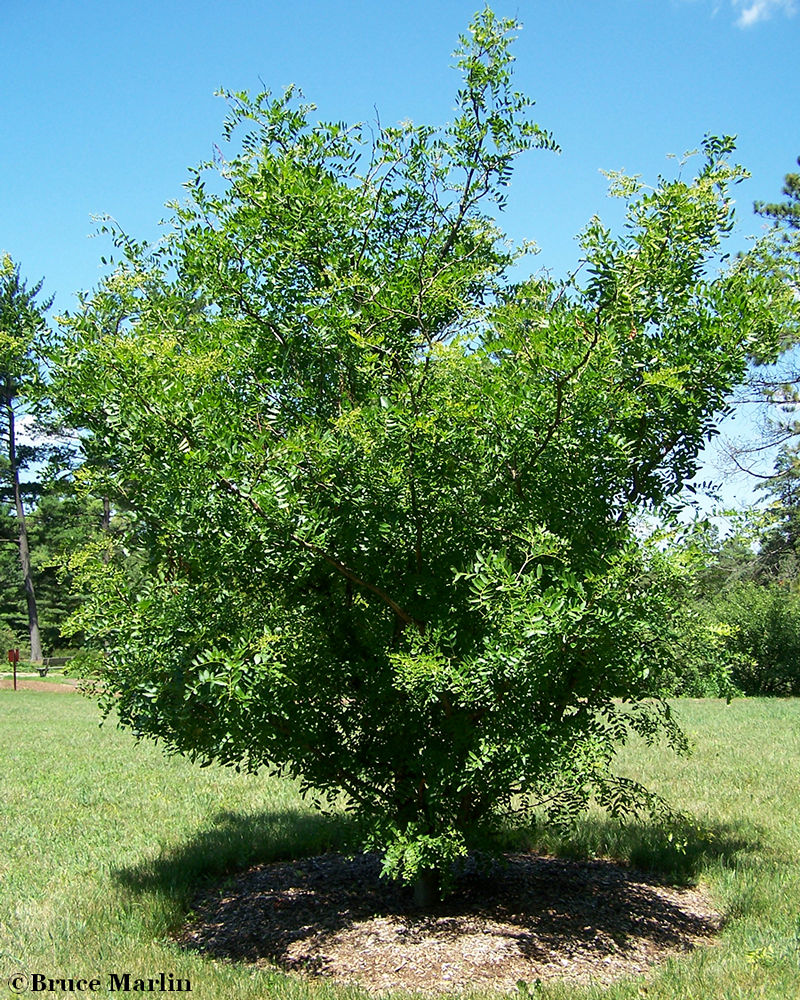Caspian Locust Tree – Gleditsia caspica

Caspian Locust tree was started from a cutting 16 years ago
Summer: The pinnately compound leaves (one large stem with many small leaflets) allow filtered sunlight, making an attractive canopy that is practical for growing grass or other plants below.

Fall: Color in the fall is variable but is usually a shade of yellow and can be very nice. The large seedpods ripen and become a maintenance consideration for most of the fall and winter months. Wildlife cherishes the sweet pods from which the tree gets its name. The thorny specimen (Gleditsia triacanthos) from which this variety arose is one of the thorniest trees found. Thorns can protrude directly from the trunk and be a foot or more in length. Crews have been busy two decades at the University of Illinois at Urbana-Champaign taking down diseased honey locust trees that were once planted to replace the declining American elms.
Family: Fabaceae (Leguminosae)
The Fabaceae, or legumes, are mostly herbs but include also shrubs and trees found in both temperate and tropical areas. They comprise one of the largest families of flowering plants, numbering some 400 genera and 10,000 species. Peanuts, beans, peas, wisteria and locust trees are among the family.
Tree Encyclopedia | Tree Index | Fabaceae Index | Birch | Oak

